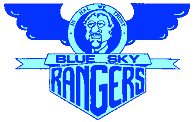Sega
In the mid-1950s, American David Rosen started an import/export company in Tokyo. Rosen Enterprises exported art, but success came with importing the coin-operated games and photo booths that were popular on U.S. military bases in Japan. In 1965, Rosen purchased a Japanese jukebox company so he could manufacture his own games. He renamed his expanded company Sega, short for Service Games. His first effort, a pioneering electronic arcade game called Periscope, was a hit in Japan and the U.S. It and subsequent games were successful enough that the company was purchased in 1970 by conglomerate Gulf + Western.
By 1980, Sega was manufacturing and exporting video arcade machines. Their titles, including Space Fury, Frogger and Zaxxon, did so well in the U.S. that Sega started an American operation.
At the beginning of the '80s, Sega licensed their arcade titles to other companies for release in the home video game market. But in 1983 they began releasing Atari 2600, Atari 5200, Atari computer, Commodore Vic 20, Commodore 64 and Intellivision versions of their games through their own American division. Due to a previous agreement, ColecoVision versions continued to be released by Coleco.
While Sega did publish a number of games for several systems, of the four titles they officially announced for Intellivision, only Congo Bongo was released.
As the video game industry crashed in 1983 and 1984, Gulf +Western sold the American division of Sega to the Bally/Midway arcade company. The main company, based in Tokyo, was sold to a group of Japanese investors.
The "new" Sega got back into the home video game market with a series of game consoles. While the first models offered little competition to the late 1980s leader Nintendo, the Sega Genesis console and the Sonic the Hedgehog cartridge established Sega as one of the leading companies in the current video game industry.
- Buck Rogers Planet of Zoom (unreleased)
- Congo Bongo
- Star Trek (unreleased)
- Tac/Scan (unreleased)
